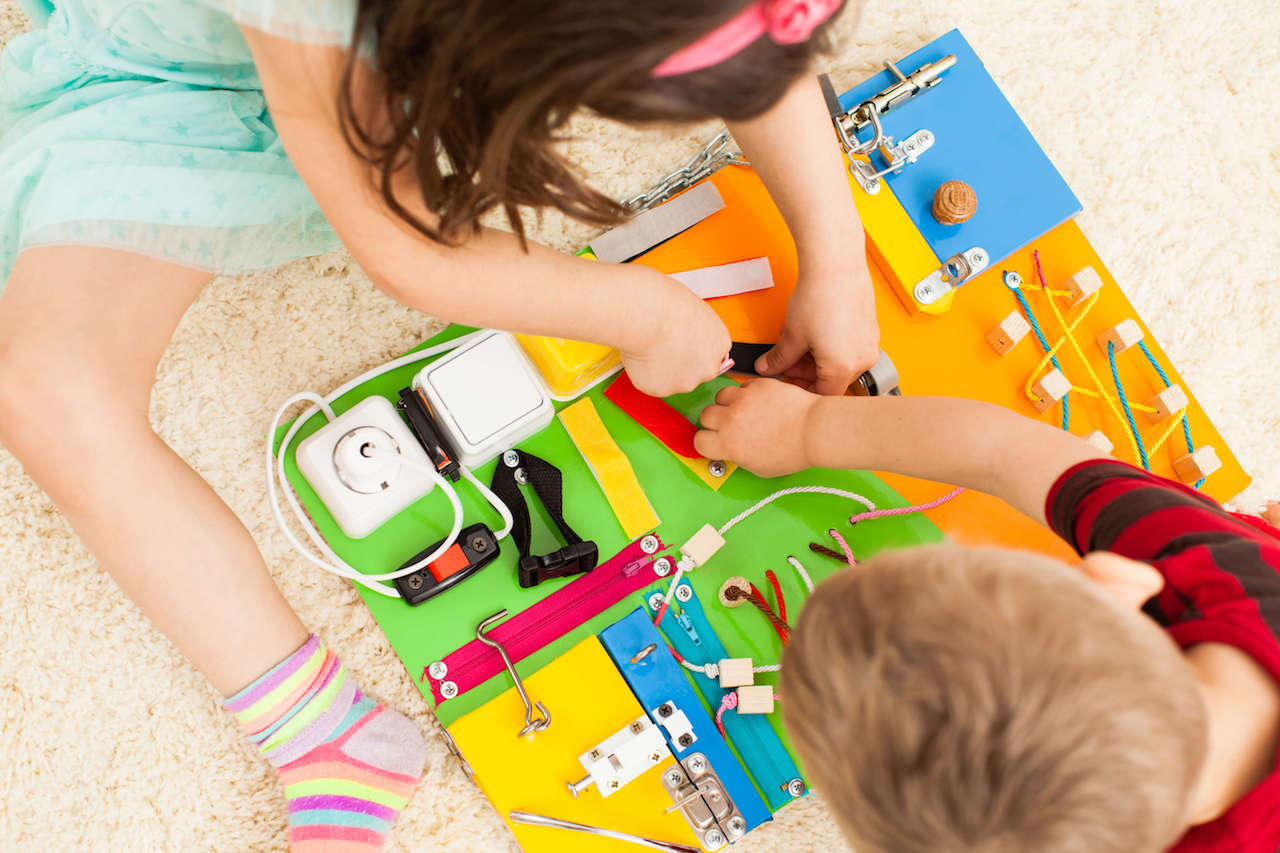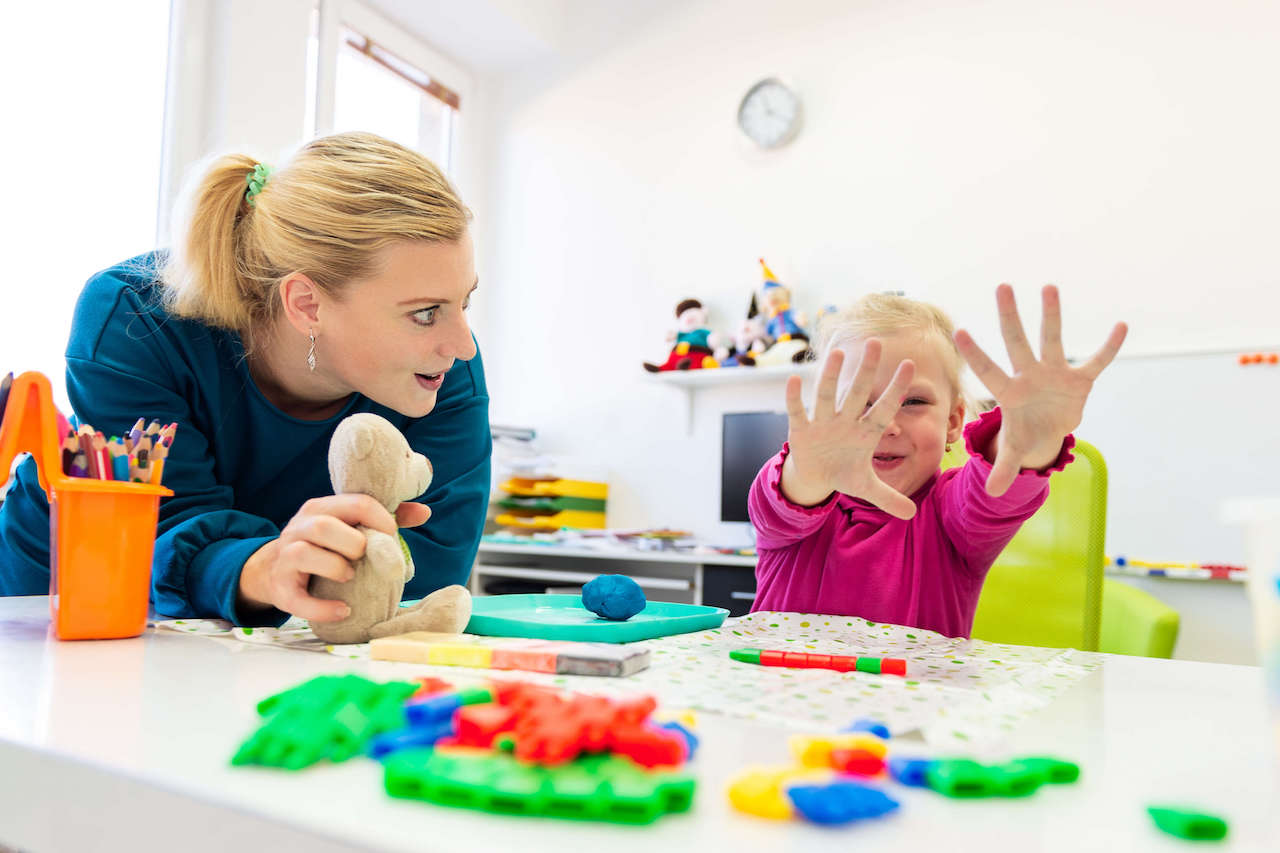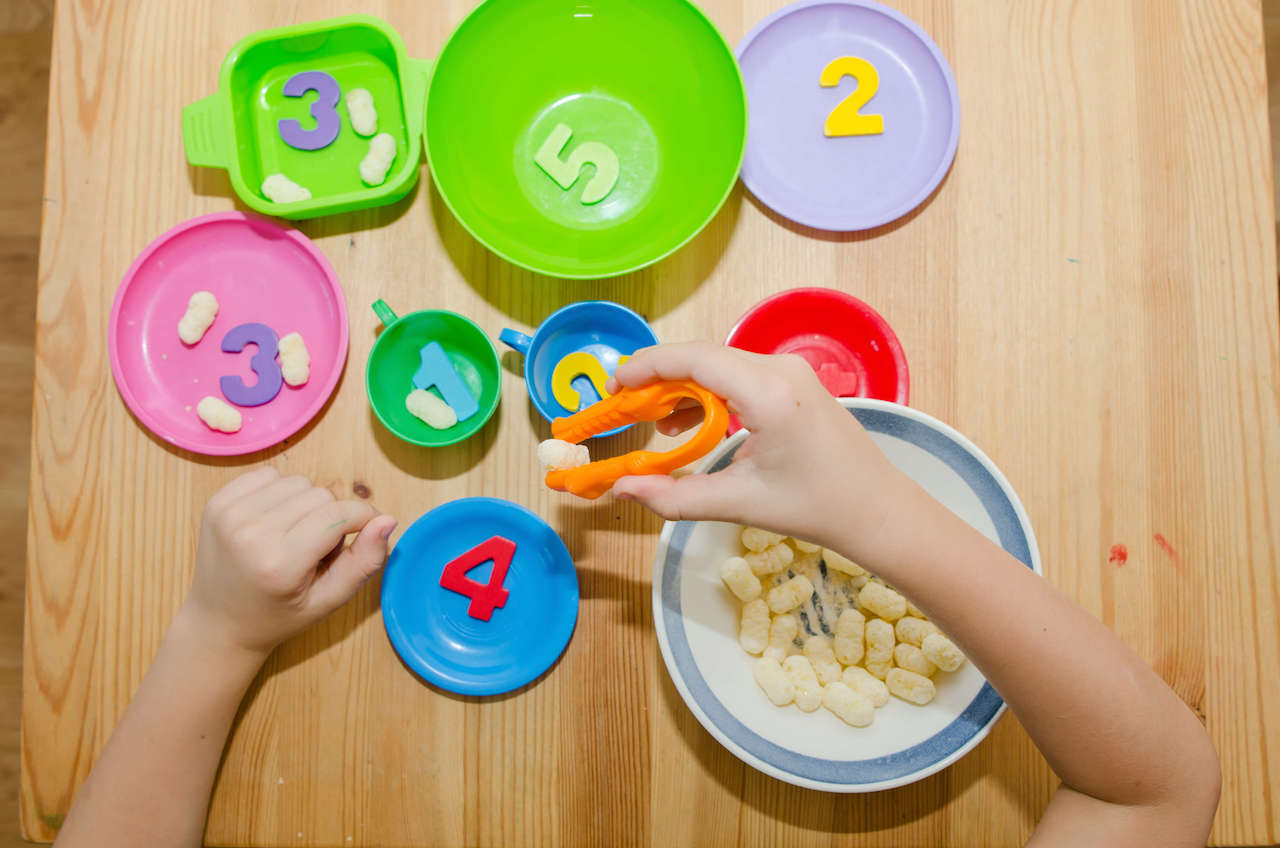The Ultimate Guide to Sensory Processing Disorder Easy
Can you imagine how it would feel if every sight, sound and touch were unbearably intense? Or if those senses were greatly diminished?
The sensory systems are vital for knowing what's happening in our bodies and interacting with each other and our environment.
Many people take their senses for granted. But some children (and adults) have a disorder affecting the nervous system that impacts the normal processing of sensory information.
If you're reading this guide, it's likely you have a child with a sensory processing issue (or perhaps have sensory concerns yourself). If so, you're not alone. Be assured that sensory disorders are relatively common, and help is available. We hope this guide will provide helpful advice about sensory disorders and finding the support you need.
Let's start by exploring sensory processing.
What is sensory processing?
Sensory processing is a term describing how we interpret (or 'process') information we receive through our senses. The ability to receive and organise this information is vital for healthy function of the mind and body.
There are eight sensory systems:
- Visual (sight) – received through our eyes, and interpreted as things like colour, brightness, shape and movement.
- Auditory (hearing) – our ears receive sound waves and we process them as different frequencies and volumes
- Olfactory (smell) – the odours sensed through the nose
- Gustatory (taste) – such as sweet, savoury and salty
- Tactile (touch) – what we feel with our skin, such as whether things are rough, smooth, cold or hot
- Vestibular (balance) – the sense of where our heads and bodies are in space and control of eye movements
- Proprioceptive (joint position sense) – the sensation of joint and muscle movements and postural control
- Interoception (internal sensing) – the feelings inside our bodies, such as hunger, thirst, and butterflies in the stomach.

Each sensory system sends information to the central nervous system (the spinal cord and brain), enabling us to function effectively and safely. The sensory systems work independently, but also interact with each other. For example, smell and taste are closely related – you may have noticed that food loses its taste when you have a head cold. The vestibular and proprioceptive systems work together to keep us upright and manage challenges to our balance (such as tripping over something).
What is Sensory Processing Disorder?
Sensory processing disorder (SPD) is a condition affecting the brain's ability to receive and respond to sensory information. This causes a misinterpretation of sensory input that leads to altered function.
Under normal circumstances, the nervous system smoothly receives and interprets signals from within the body and from the outside world. The nervous system uses this information to send out other signals. For example, if you receive a signal that you're touching something extremely hot, it triggers a signal to remove your hand.
These signals are important for learning, memory, behaviour, emotions, movement and coordination. A breakdown within the system affects your ability to function.
Formerly known as sensory integration dysfunction, SPD is a disturbance of normal function with a set of common characteristics.
It's estimated that sensory processing disorder affects 5 to 16 percent of school-aged children. According to SPD Australia, it affects the functional skills of 1 in 20 children.
Signs and symptoms of sensory processing disorder in children
People with SPD fall into one of two categories:
- Hypersensitive (over-reactive): these people will be unusually sensitive to sensory input. For example, lights may seem unbearably bright, common sounds may be painful, or clothing labels cause extreme irritation on the skin. Children who are hypersensitive may try to avoid sensory input, by running away from situations, for example.
- Hyposensitive (under-reactive): these people are less sensitive to sensory inputs. They may seem to have a high tolerance to temperature or pain or seek out sensory experiences. For example, they might repeatedly sniff their food, rub things against their skin, or perform certain movements. Because they need more sensory input to become engaged, they may also seem to have a low level of interest in their surroundings.
If your child seems either excessively sensitive to sensory inputs, or seeks out sensory experiences, it could indicate they have sensory processing disorder. It may involve only one sense, such as hearing or touch, or it could affect several senses.

Like most disorders, sensory processing disorder symptoms occur on a spectrum. Depending on their severity, your child's symptoms may have minimal to extreme effects on their function.
Other signs your child could have a sensory processing issue include:
- Lack of coordination or bumping into things
- Slow development of fine and/or gross motor skills
- Seeming lethargic or disinterested
- Having difficulty knowing where they are in space
- Strong emotional reactions to "normal" stimuli
- Difficulty regulating their emotions or behaviour
- Having "meltdowns" or temper tantrums
- Difficulty communicating or engaging in play
- Difficulty handling change
- Poor attention or concentration, being easily distracted
- Fussy eating or distress while feeding
- Seeking constant movement eg spinning, jumping, running
- Disliking/avoiding moving play equipment eg swings
- Difficulty following instructions at home or school
- Poor planning, sequencing or organisational skills.
The symptoms of sensory processing disorder overlap with those of other disorders. For example, children with attention deficit hyperactivity disorder may display similar behaviours to children seeking sensory stimuli. Children with autism spectrum disorder (ASD) and other developmental conditions often have sensory processing difficulties.
To make sure your child gets the right diagnosis and support, it's important they're assessed by a qualified health professional.
How is sensory processing disorder diagnosed?
While many children have sensory issues sometimes, sensory processing disorder might be suspected when symptoms are affecting normal function or causing difficulties with everyday life.
There is still some debate among doctors about whether SPD is a real disorder. Some believe that particular children are simply highly sensitive, or that sensory issues are a symptom of other disorders like ASD. Other doctors believe you can have SPD without another disorder. SPD is not currently recognised as a medical diagnosis.
But that doesn't mean you shouldn't seek help if your child seems to have a processing disorder. Occupational therapists are the health professionals qualified to assess and treat sensory issues.
An assessment will usually involve taking a history about your child's development, such as how things went with pregnancy, birth and reaching developmental milestones like crawling, walking and talking. They'll want to know when you first noticed your child's issues and how they impact daily life. You might be asked to fill out a questionnaire about your child's sensory symptoms.
The occupational therapist will also assess your child's function. They might check how your child reacts to certain sensory stimuli or watch how your child plays and interacts with their surroundings. They may use assessments such as the Sensory Profile or the Sensory Processing Measure.

After the assessment, they'll discuss their findings with you and suggest a management strategy.
You don't need a doctor's referral to see an occupational therapist, but your GP or child health nurse is a good place to start if you're concerned about your child's wellbeing. Having a referral may also enable you to access funding for therapy.
Signs that could indicate it's time to seek professional help for your child include:
- when behaviours are interrupting everyday life
- if symptoms suddenly become worse, or
- when their reactions to sensory inputs are too hard to manage at home or school.
What causes sensory issues in children?
As yet, the cause of sensory processing disorder hasn't been found. However, studies have revealed some clues. A 2006 twin study, for example, showed there may be a genetic component to light and sound hypersensitivity. Researchers found that when one twin was overly sensitive, the other twin was more likely to be, too. This study also showed that fearful or anxious children may have sensory issues with tactile stimuli (like hair brushing).
Other studies have indicated that sensory issues may be more common in children born prematurely or with birth complications. It has also been linked with abnormal brain activity. A small 2013 study found that children affected with SPD have differences in brain structure.
Sensory integration is the term describing how our brains organise and use the many sensory inputs we receive to enable us to function in daily life. Doctor Jean Ayres, an American occupational therapist and psychologist, pioneered the contemporary understanding of sensory integration in the late 1960s and 1970s.
She defined it as, 'the neurological process that organizes sensations from one's own body and from the environment and makes it possible to use the body effectively within the environment".
Sensory integration involves:
- Receiving the sensory input
- Interpretation of that input by the nervous system
- Processing that input into a response, and
- Responding adaptively to the input.
It's possible that in sensory processing disorder, the brain has difficulty managing the flow of sensory inputs, so the child receives less precise information about themselves and their environment.
This can lead to discomfort, problems managing the stress of daily sensory demands, and learning and behavioural difficulties.

Sensory processing disorder treatment
Occupational therapists commonly treat children (and adults) with sensory processing difficulties. Treatment will depend on what's found during an assessment and your child's needs. Usually, it involves helping children to function better by working on activities they are struggling with. It might also include helping children become more aware of what's happening in their bodies and learning to tolerate sensory inputs.
How occupational therapy helps children with sensory issues
Most occupational therapy approaches to managing sensory processing disorder come under the umbrella of sensory integration therapy (SI). The goal of sensory integration is to challenge the child in a controlled, stimulating environment to help them learn to respond appropriately to sensory inputs and function more normally.
SI uses fun, playful activities that allow your child to experience sensory stimuli without feeling overwhelmed. Over time, they develop the ability to cope better with sensory stimuli and learn to use these coping skills in daily situations at home and school.
Some occupational therapy approaches for supporting children with SPD include:
- Physical skills development – helping your child develop strength and coordination so they can function better and participate in social and educational opportunities
- Education – teaching you about appropriate management strategies and helping your child to cope more effectively with sensory inputs
- The Alert (Engine) program – this teaches children about self-regulation using sensory and cognitive (thinking) strategies
- The M.O.R.E program – this uses motor (movement) components, oral organisation, respiratory demands, and eye contact to assist with sensory regulation
- Recognising triggers – teaching parents, carers and teachers about ways to manage the environment and reduce sensory triggers
- Functional skills development – this is about helping your child develop practical skills such as sitting upright in a chair, handwriting and self-care skills like feeding and dressing
- Managing behaviour – the occupational therapist may suggest strategies to help you develop a consistent and appropriate response to behavioural issues.

Sensory program
Often, what's known as a sensory program (also sometimes called a 'sensory diet') will be used as part of therapy. Unlike other diets, this one has nothing to do with food! A sensory diet is a list of sensory activities for use at home and school. The activities are designed to provide sensory feedback to help your child stay organised and focused throughout the day.
Your child's sensory diet will be tailored to suit their challenges and needs. It might include things such as scheduling a time every hour to go for a short walk, access to fidget toys during class, or use of headphones so your child can listen to music while they're working.
Sensory feeding therapy
Unlike the sensory diet, this type of therapy for children with processing issues is related to real food! Children with SPD may be more sensitive to the tastes, smells, sights and textures of certain foods.
Sensory feeding therapy involves introducing new foods in a way that helps your child become gradually desensitised to them. It starts with foods your child is comfortable with and builds from there. For example, first you have your child explore new foods using familiar cutlery, and introduce new foods that are similar to those they are already comfortable with.
One example is the SOS (Sequential Oral Sensory) approach to feeding. This fun, evidence-based and family-centred program helps children become comfortable trying new and different foods and learning how to chew and manage food in their mouth.
Run by qualified dietitians, speech-language pathologists and/or occupational therapists, the program integrates posture, sensory systems, motor skills, behavioural skills, social/emotional development, medical concerns and nutritional impacts.
The goals of feeding therapy include identifying appropriate feeding milestones and developing your child's feeding skills and their behaviours around new and different foods.

How to help a child with sensory processing disorder
In addition to therapies, there are several ways you can support your child with sensory issues, including:
- Having a regular routine and providing advance notice of any expected changes
- Using visual cues (such as hand signals) to support routines and introduce new or different tasks
- Being aware of how environmental changes (eg a noisy truck going past or flashing lights on TV) may impact your child's behaviour
- Knowing your child's strengths, challenges and areas of interest
- Allowing extra time to complete challenging tasks if necessary
- Considering extra support at school if needed.
Your therapists can provide advice about specific strategies to support your child with a sensory disorder.
This guide is proudly brought to you by Growing Early Minds. We hope it has given you useful information and guidance for helping your child with sensory issues grow and thrive.
Our team of qualified, experienced Occupational Therapists often work with children who have sensory processing difficulties, including those with complex needs such as developmental delay, ASD and disability. Our trained and skilled Paediatric Dietitians and Speech-Language Pathologists run the SOS feeding therapy program.
Growing Early Minds are a registered NDIS and Medicare provider and some families may be eligible for financial support or funding packages to help offset the cost of therapy.
We can see your child in our Blacktown clinic, or at your home, school or childcare centre. Telehealth appointments are also available.
Want to find out more? C all us on 1800 436 436 or send us a message .
References
- https://www.webmd.com/children/sensory-processing-disorder#1
- https://www.webmd.com/children/sensory-processing-disorder#2
- https://childmind.org/article/sensory-processing-issues-explained/
- https://spdaustralia.com.au/about-sensory-processing-disorder/
- https://childdevelopment.com.au/areas-of-concern/diagnoses/sensory-processing-disorder-spd/
- https://familydoctor.org/condition/sensory-processing-disorder-spd/
- https://www.ncbi.nlm.nih.gov/pubmed/16649001
- https://www.sensoryintegration.org.uk/What-is-SI
- https://www.ucsf.edu/news/2013/07/107316/breakthrough-study-reveals-biological-basis-sensory-processing-disorders-kids
Source: https://growingearlyminds.org.au/tips/sensory-processing-disorder-the-ultimate-guide/
0 Response to "The Ultimate Guide to Sensory Processing Disorder Easy"
Post a Comment